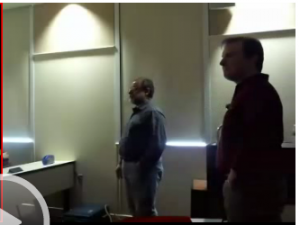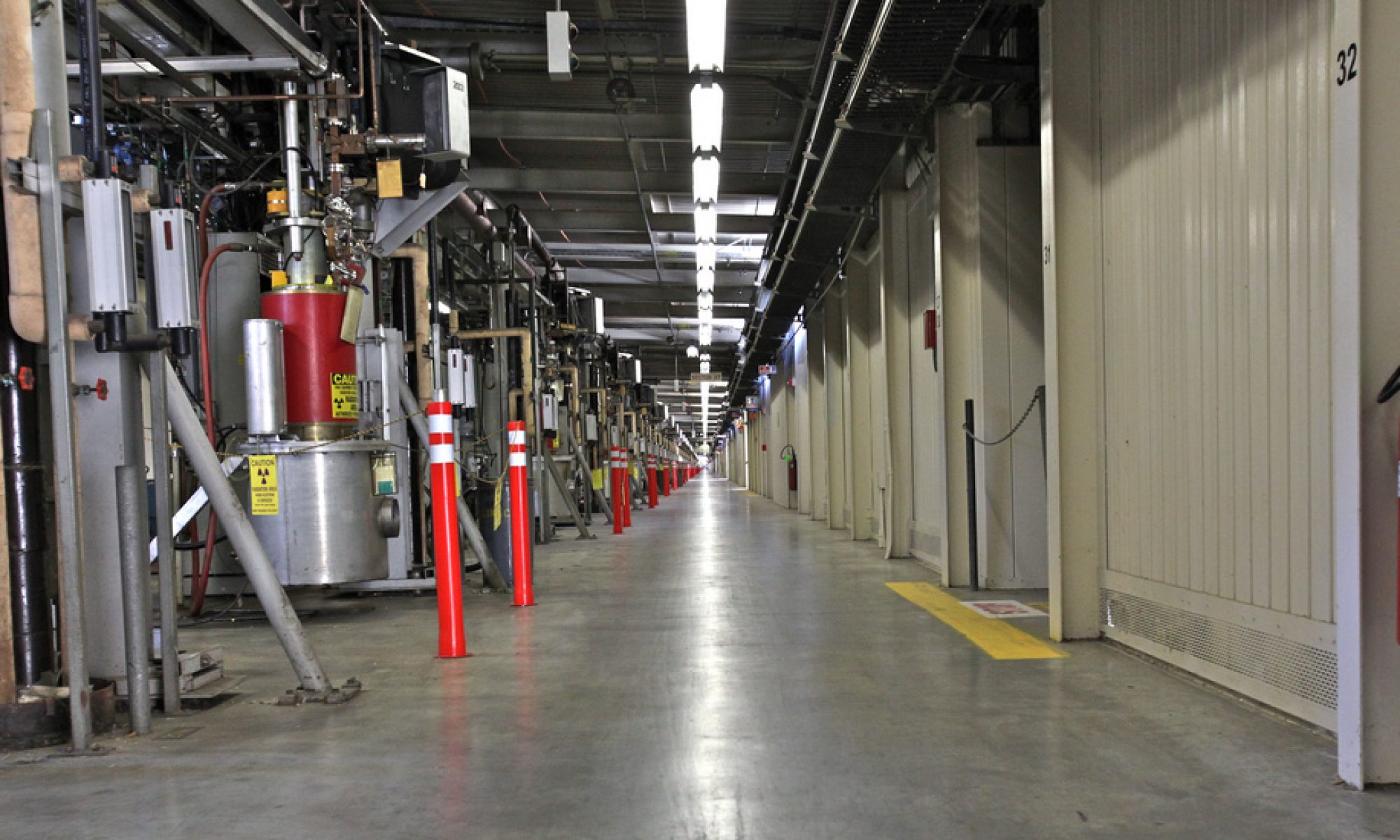
For two semesters now, I have had the deep pleasure of being one of the professors teaching SMU’s Cultural Formations B/Physics 3333 [1]. I am proud to say that when Jodi and I were offered faculty positions at SMU, there were three things that attracted me to the institution: (1) its commitment to excellent research in an area of physics about which I am passionate (subatomic particle physics), (2) the fact that two positions were available and they wanted both Jodi and me, and (3) they taught a course on the scientific method, critical, and creative thinking.
Do you know how rare that last thing is (and, yes, I am saying that knowing item 2 is already very rare)? Skeptic Magazine hosts a part of their site entitled “Skepticism 101,” [2] where they offer links to courses on this subject. Our course at SMU is one of those linked there [3]. They list 24 such courses, although only part of the 24 listed cover as many subjects as we do (some of them focus more on psychology or atheism, whereas we focus on the scientific method and its use and abuse). The SMU course has also now been offered 20 consecutive semesters, requiring the dedicated effort of two full-time faculty and a host of guest lecturers who provide special insight, expertise, and depth on many subjects (from religion, to the sciences, to history and the law).
How many universities and colleges are there in the United States? There are 2774 4-year degree-granting institutions in the United States as of 2010 [4]. While the Skeptic Magazine list is probably by no means comprehensive, we can use it to set a lower limit on the number of such institutions that offer courses like this. There are no fewer than 0.8% of U.S. 4-year institutions of higher education that offer a course like this. If we (generously) assume that Skeptic Magazine has managed to find half of courses such as ours, we can probably safely assume that no more than about 2% of institutions offer a course like this.
That’s fucking crazy. Pardon my colorful English. But . . . seriously? What the fuck, America? How can we be so high and mighty about the greatness of this nation, when such greatness comes largely from being able to discern bullshit from truth? The ability to see the path, to know the right thing to do, is what makes innovation, creativity, and economic and social mobility at all possible. What kind of country is this that only a few percent of 4-year institutions offer a course on critical and creative thinking?
All shock aside, I’m not going to lie to you: teaching a course like this will kill you. There are a number of reasons why. Here are a few.
- The work load needed to teach critical and creative thinking, as well as good writing, is high. For our course, we have about 60 students. They have to read three books over 15 weeks. They have to write a 7-page and 15-page paper, one of which they get to re-write. They have shorter writing assignments. They have daily quizzes during class periods. We have to keep our energy levels high and constant throughout the course. Motivating 60 students is not easy. In addition, we have to be on high alert for bullshit and fraud from students. 19 consecutive semesters have now passed, during which at least one person in the class plagiarized a paper. In addition, we have repeatedly detected cheating on quizzes. As my colleague Prof. Scalise put it, (paraphrasing) of all the courses you’d think to cheat in, why would you cheat in a course about detecting lies, scams, fraud, and bullshit?
- The more you teach this course, the less you tolerate nonsense. At first, you don’t notice it. But then one day you find yourself worked up about someone’s naturopathic/homeopathic/new age/religion-as-science nonsense on Facebook and you have to actually stop yourself from going into balls-crazy rant mode. It’s not easy. Restraint 100% of the time is nearly impossible.
- You will lose friends. I don’t mean good or real friends. I mean “2Fs” – Facebook Friends. Most people cannot tolerate disconfirming evidence, or dissenting voices. As humans, we seek like-minded people; when faced with someone who challenges our knowledge, we tend to recoil and try to avoid the cognitive dissonance of opposing views. As a teacher of critical thinking, you must ACTIVELY SEEK opposing views to understand why they are or are not consistent with scientific thinking. But people who are not doing this for a living just can’t tolerate it. I’ve seen about 5-6 people evaporate from my “2F” list this year alone, people who (let’s face it) were not exactly friends to begin with. But for those of you who like the comfort of lots of fake friends on Facebook, get ready to lose a bunch.
- As I said above, you have to seek out disconfirming evidence and dissenting voices. How can you understand nonsense if you do not seek it out? I have found myself subscribing to the Twitter feeds of The Discovery Institute, politicians I dislike (really, that could be any of them), TV doctors, and other such sources of misinformation. Why? Sure, it’s like burning your own eyes when they tweet something . . . but if you don’t let yourself be blinded by the cold fire of their anti-science nonsense, you will never learn to see through it. I won’t lie to you – it makes my brain and my heart hurt. It’s probably grayed my hair a little, too.
OK, so that’s the risk. But what is the reward? The rewards are greater than the costs, my friend. You HAVE to teach critical thinking.
- You will get wicked critical thinking superpowers, where the hollow rhetoric, logical fallacies, and weak thinking of a host of talking heads will suddenly seem to you as shadow plays. Where once you might have been unable to discern the bullshit from the truth, you will smack B.S. out of the air as easily as King Kong swatting bi-planes out of the sky. It’s like Mithril Armor and The Force all rolled into one intellectual package.
- You will meet the most amazing students. Every semester, there are these incredible gems of students that rise to the top 5% of the class. Some of them do it right away, and are in the class for the cultural formations credit and the entertainment of seeing their way through crazy things like UFOs or the Mayan Apocalypse Hoax. Some of them master the skill over the course of the semester, and you can watch them emerge from the course shielded more than ever against nonsense while themselves actively seeking to debunk bullshit. Even little things get me excited – like when a student emails you to say something like, “I used to be able to sit through political ads on TV, but now whenever one comes on all I can think is ‘PROPAGANDA AND FALLACIES!’ and switch off the TV.” That’s success you can’t buy.
- You’ll master the art of finding peer-reviewed, double-blind, randomized controlled trial research. That’s like learning to sniff out truffles. Whenever students come to me and say, “I just can’t find any research on X and Y!” I whip out the SMU Central University Libraries journal search engine and feel like an information god. You will come to realize that there is nothing more satisfying than reading a series of such articles, all of them finding that some wild B.S. cure is no better than placebo, and this wave of scientific satisfaction will wash over you. It’s like you now actually KNOW something real and reproducible and reliable about the world.
I have a sabbatical coming up next semester. I will miss teaching this course. Of course, I’ll be so deep in research I’ll probably numb the pain in no time. After all, research is my favorite thing. But part of me worries that those critical thinking superpowers are going to dull just a little bit over the next 9 months.
[1] http://www.physics.smu.edu/pseudo/
[2] http://www.skeptic.com/skepticism-101/
[3] http://www.skeptic.com/skepticism-101/the-scientific-method-critical-creative-thinking/
[4] http://nces.ed.gov/programs/digest/d10/tables/dt10_275.asp

